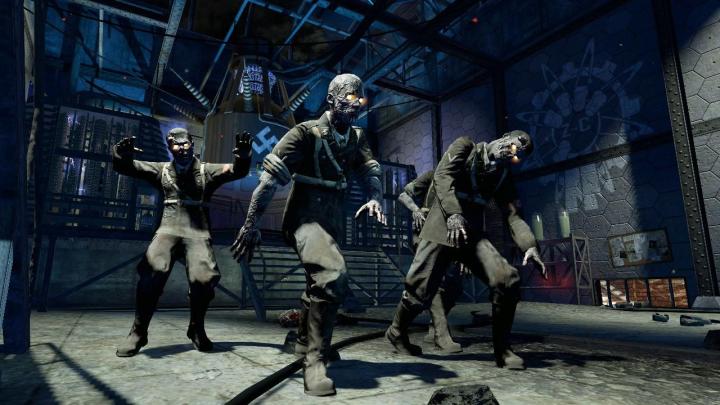
Let’s step back. Zombies mode is the sort of wave-based survival minigame that’s become so prevalent in modern day game development. There’s no end to the mode, and no real script either. It just continues. The more you play, the tougher the zombies get. Eventually, the size and strength of the horde overcomes the firepower available, and the players — up to four of them, playing cooperatively — succumb.
Lamia spoke to the origins of the mode in his talk at the 2015 DICE Summit. The zombies first appeared in Treyarch’s Call of Duty: World at War, the first game in the series that followed the groundbreaking Call of Duty 4: Modern Warfare and the last in the series to feature a World War II setting. It’s also the only one in the series that allows for cooperative play throughout the campaign.

According to Lamia, the expanded play that co-op offered led to some behind the scenes tinkering. That’s where Zombies was born. It was perceived as the wrong idea initially, to the point that Lamia almost canned it. Why?
The team was already wrestling with new tech, and they were crunched for time. World at War was behind schedule and the Zombies concept was introduced late in the development timeline. There were no pre-existing plans to add the mode and no schedule in place for building it.
Add to all of this the fact that it was a Call of Duty game — probably the biggest franchise on the planet at that point. Expectations at Activision were that World at War would be the top-selling game of that year’s holiday season. And zombies? Entirely off brand. They have no place in the Call of Duty universe.

Then Lamia tried it. And wanted to play it again. And again. Zombies was infectious. Its difficult-to-predict play and on-the-fly strategizing was the sort of thing that turned heads. And turn heads it did. Word got out about this weird Nazi zombies mode, and it traveled through Activision’s hierarchy.
Some resisted. Call of Duty was coming off the huge, franchise-changing success of Modern Warfare. Zombies just didn’t fit. Lamia and his team saw the fun factor, but there was no guarantee that fans would take to such a different concept packaged into the brand new ideas they had only embraced a year before. That’s why Zombies was realized in World at War as an easter egg; beat the campaign and you get this cool, weird thing that, despite any tonal shifts, was just downright fun.
Treyarch saw the success, the buzz around this bonus, hidden mode, and that got the team thinking. How do we grow this wacky idea? It was so undercooked in its earliest iteration, just four soldiers trapped in a gradually unlocking house. It was fans that filled in the blanks.

They started to theorize about what things meant, what the story behind this thing was. The narrative that’s built since World at War and the downloadable content maps that added to it was spurred in large part by interested fans that craved more. They wanted to know, “Why zombies? How zombies?” And Treyarch complied.
Call of Duty: Black Ops introduced Zombies as a standalone mode, freed from the constraints of a post-campaign unlock. It was an easter egg no more. All of the game’s DLC releases added new maps. Characters were given voices. A story slowly formed, peppered into the darkest, most hidden corners of the returning mode. What had once been an easter egg now contained hidden surprises of its own, and they laid out the story.
Hand-in-hand with this growth was the rise of YouTube and social media. Suddenly, there were two stories in play: The one that Treyarch plotted out and tucked away in each map, and the one that players recorded and broadcast themselves. Forum threads sprung up. Entire websites formed. Livestreams. A sub-culture formed around this hard-to-find lore.

Social media served a dual purpose. For pros, it was a chance to show off their skills. It’s an impressive feat to survive 20 or 30 undead waves in Call of Duty’s Zombies mode. But for the uninvolved, it was also a chance to see what they were missing. All of the Zombies easter eggs require a significant amount of communication. If you’re not playing with friends, or at least with four folks speaking through mics, you’re not going to pull it off.
But YouTube eliminated the need to do so. Curiosity could be sated. Hit play, and see what you can’t do by yourself. Treyarch was suddenly an indispensable playing piece in the Call of Duty universe.
What you see here is one of the earliest examples of Let’s Play culture. It’s now common to see elaborate videos pulled from all manner of games, from Minecraft to Destiny. We’ve done it ourselves here at Digital Trends. But much like the mode itself, it was a fresh idea way back when the Zombies first shambled into Call of Duty.


